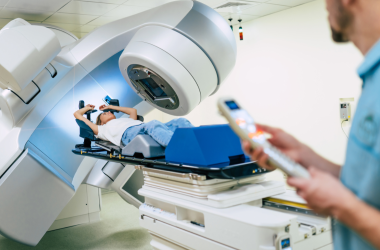New Report Predicts $10 Billion Business for Lithium-Ion Capacitors and Other Battery Supercapacitor Hybrids
Wednesday, January 31, 2024- According to a new commercially oriented 470-page report, the market for lithium-ion capacitors (LIC) and other battery supercapacitor hybrid (BSH) energy storage is expected to reach $10 billion. This report is the most comprehensive and up-to-date analysis of the subject, with a focus on opportunities for value-added materials and device suppliers, as well as investors, product and system integrators, and others. The report includes a glossary and defines terms throughout, prioritizing information on dollars, market gaps, societal benefits, and lessons learned from both successful and failed ventures rather than relying on academic nostalgia.
Dr. Peter Harrop, CEO of Zhar Research, comments on the industry’s success, stating, “After a false start with lead and nickel versions and a focus on small electronics that had limited demand at the time, the industry has now shifted towards larger lithium-ion capacitors for electrical engineering. These capacitors are in high demand for emerging technologies such as fusion power stations, electric trains, unmanned mining vehicles, heavy vehicle fast chargers, and electromagnetic weapons.”
He adds, “The latest versions of these capacitors offer more than just a compromise between supercapacitors and lithium-ion batteries. They have longer lifespans than the equipment they are used in and provide more than enough power while also having minimal end-of-life issues, similar to supercapacitors. Many of these capacitors can now hold electricity almost as long as a lithium-ion battery, but with ten times the power density and pulse capability. There are also versions that are approaching the energy density of lithium-ion batteries, but without the risk of flammability or the need for a battery management system or temperature control, making them a huge advantage. The influx of new research, which is covered in this report, offers even more promising developments in the future, such as lower costs and the elimination of valuable materials in most cases.”
The report is divided into several sections, including an Executive Summary and Conclusions that provide an overview for readers in a hurry. This section includes 30 key conclusions, SWOT (Strengths, Weaknesses, Opportunities, and Threats) appraisals, 42 forecast lines (sub-types, by region, power level, and application, as well as for the equipment which they are fitted from 2024-2044. The report also includes a market and technology milestone roadmap from 2024-2044, as well as infographics that illustrate key points and successes in the industry.
The Introduction, which spans 23 pages, begins with a discussion of the place of battery supercapacitor hybrids in the energy storage toolkit, including the replacement of batteries with BSH in a 2023 e-bike. This section also explores how energy harvesting and beyond-grid power production are driving the BSH market and how it has evolved beyond standard formats to appeal to a wider audience. The technology is then introduced by comparing the internal design of BSH to other technologies, such as LIB (lithium-ion battery) and graphene. The section also delves into BSH voltage, charge retention, and aging issues compared to other competitors. It then highlights BSH’s competitive position in terms of energy density and power density, as well as its storage capabilities and rated power return. A table comparing 34 parameters for LIC, Li-ion battery, and supercapacitors is also included, as well as a comparison of BSH formats with other technologies and additional resources for further reading.
The report then goes into depth on each type of emerging BSH technology, beginning with Chapter 3, which covers “Future lithium-ion capacitor design and competitive position” in 10 pages. This is followed by Chapter 4, which focuses on “Lead-ion, nickel-ion, potassium-ion, sodium-ion, zinc-ion capacitors: design and competitive position” in 15 pages. Chapter 5, “Other emerging chemistries for battery-supercapacitor hybrid storage” covers 15 pages and explores BSH using Zeolite Ionic Frameworks (ZIF), Metal Organic Frameworks (MOF), MXenes, and other exotic materials such as metal alloys and manganese complexes. These chapters are an in-depth analysis of the latest research, including developments from 2024. The report also highlights the importance of non-toxic, non-flammable, and long-lasting materials for BSH technology.
For those seeking more detail on the anatomy of BSH, Chapter 6, “Emerging materials employed with 2024 and 2023 research pipeline analysis,” covers 50 pages and provides a deeper look at the active electrode, electrolyte, and membrane opportunities emerging in BSH technology. The section also includes an analysis of the battery electrode, with a focus on identifying



